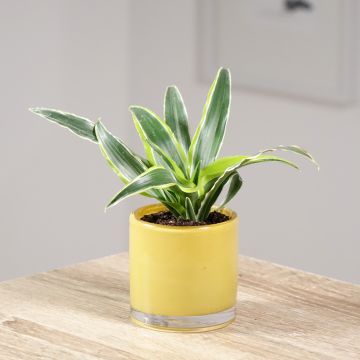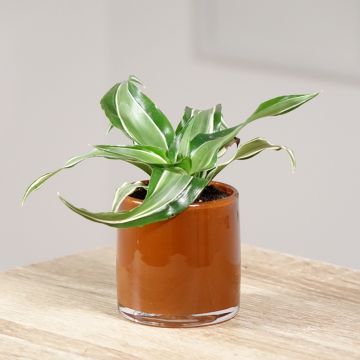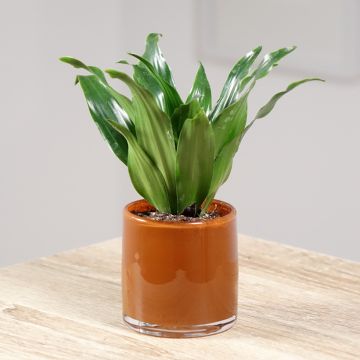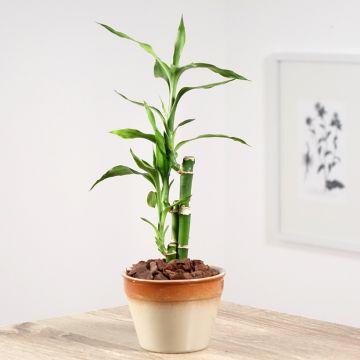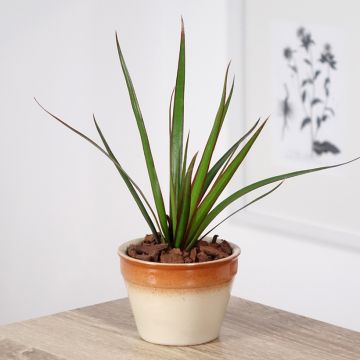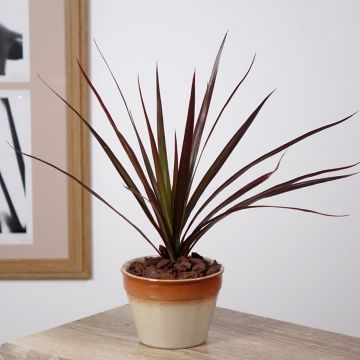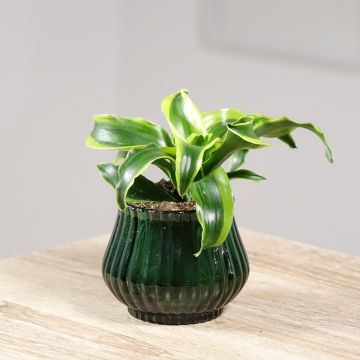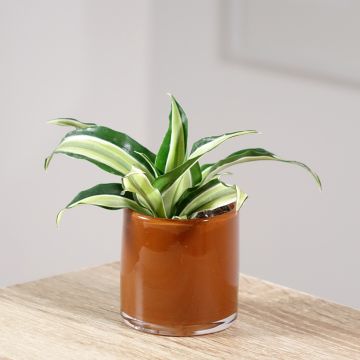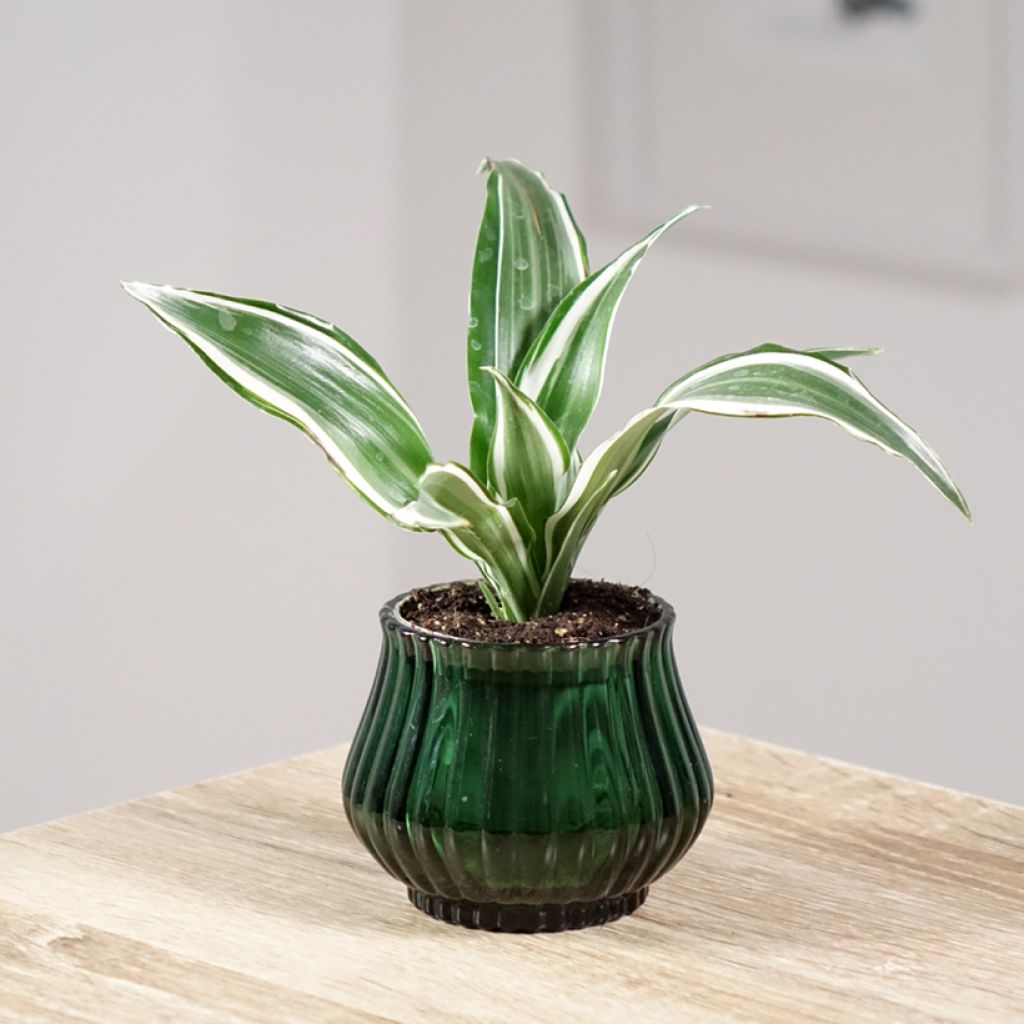

Dracaena fragrans White Jewel - Corn plant


Dracaena fragrans White Jewel - Corn plant


Dracaena fragrans White Jewel - Corn plant
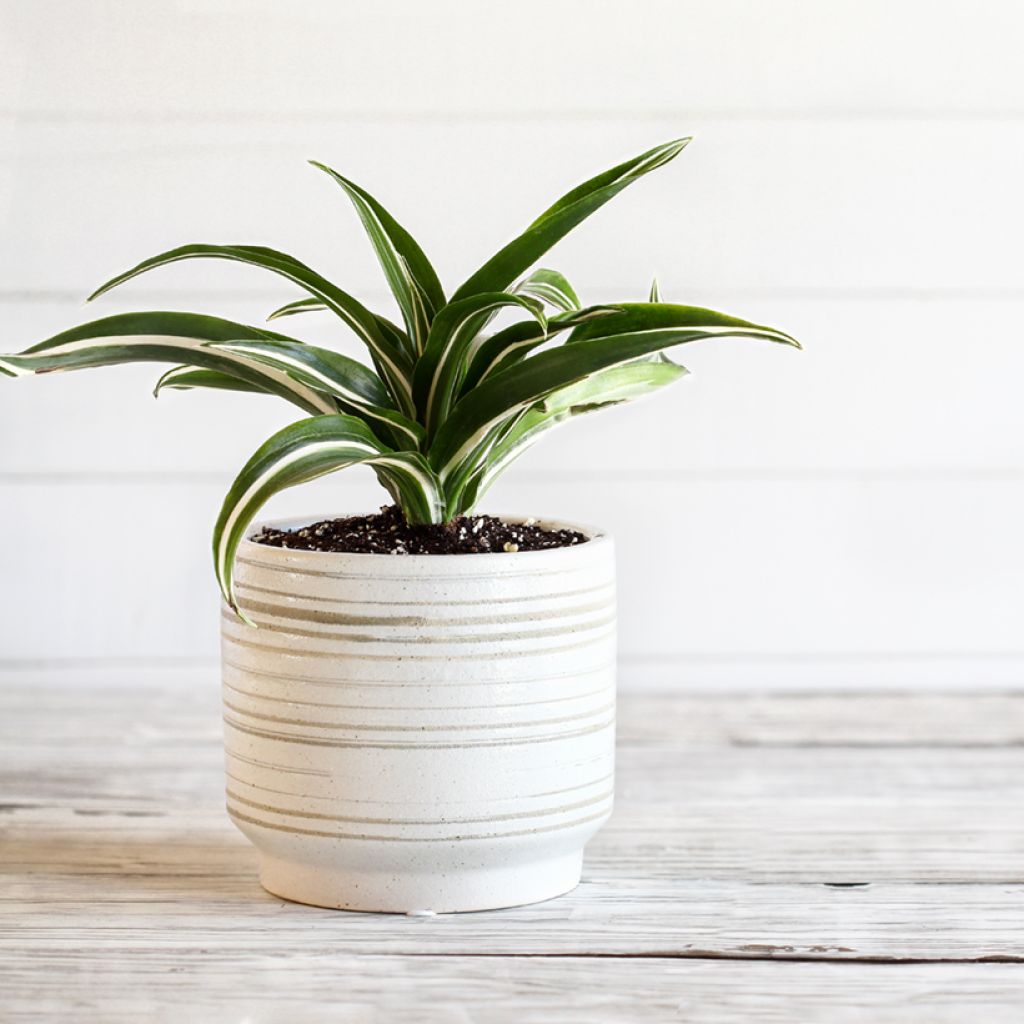

Dracaena fragrans White Jewel - Corn plant
Dracaena fragrans White Jewel - Corn plant
Dracaena fragrans White Jewel
Corn plant
Special offer!
Receive a €20 voucher for any order over €90 (excluding delivery costs, credit notes, and plastic-free options)!
1- Add your favorite plants to your cart.
2- Once you have reached €90, confirm your order (you can even choose the delivery date!).
3- As soon as your order is shipped, you will receive an email containing your voucher code, valid for 3 months (90 days).
Your voucher is unique and can only be used once, for any order with a minimum value of €20, excluding delivery costs.
Can be combined with other current offers, non-divisible and non-refundable.
Home or relay delivery (depending on size and destination)
Schedule delivery date,
and select date in basket
This plant carries a 30 days recovery warranty
More information
We guarantee the quality of our plants for a full growing cycle, and will replace at our expense any plant that fails to recover under normal climatic and planting conditions.
Description
The Dracaena fragrans 'White Jewel' (also known as Dracaena deremensis 'White Jewel') is an extremely attractive variety of indoor Dragon Tree, prized both for its unparalleled graphic silhouette and its beautifully contrasting foliage. The long, sword-shaped leaves are striated lengthwise with varying shades of green and white, enhancing their aesthetic form. Resembling a small palm tree, the initial clump gradually rises above the slender stem that forms over the years. Sculptural and colourful, this plant is easy to grow and requires minimal maintenance. It will add a touch of exotic flair to your room.
The Dracaena has changed botanical families several times before joining the asparagus family, the Asparagaceae. Here, it coexists with many other highly varied ornamental genera such as hyacinths (Hyacinthus) or Agaves. Depending on classifications, there are roughly 111 species of Dragon Tree, the common name for Dracaena, mostly native to Africa and Southeast Asia, but they can also be found in other regions (Canary Islands, Central America, etc.). The Dracaena fragrans, formerly also called Cordyline fragrans, grows in Africa's tropical zones, from sea level up to 1,500 metres in altitude. Forming dense stands in dry forests or on hillsides, the bush can reach 6 metres in height, with rarely ramified stems, measuring 2.5 to 10 cm in diameter. These support clusters of elongated, sword-shaped leaves measuring 30 cm to 1 metre in length. The inflorescences, 40 to 60 cm long, are made of a multitude of small, white-yellow flowers that open at night, releasing a very pleasant fragrance—hence the species name ('fragrans' meaning fragrant).
The Dracaena fragrans 'White Jewel' is a horticultural variety selected for the beauty of its foliage. With moderate to slow growth, this plant will not exceed 2 metres in height and 60 to 80 cm in width at maturity indoors. Still, patience is required, as after 10 years of cultivation, it may only reach 1.20 to 1.50 metres in height. With its upright, columnar habit and much more modest development than the species type, this Dragon Tree will easily find its place in your home. Its absent flowering is more than compensated by the superior aesthetics of its foliage. This cultivar is indeed captivating due to the colouration of its leaves. Very elongated and tapering gradually to a point, they display a superb variegation with subtle variations between them. Several shades of green—dark green, olive green, or even lighter—coexist with white, stretching along the length of the lamina. Sometimes the white forms a peripheral margin, other times it creates variably broad stripes bordered by dark green... and the proportion of green tones is just as random, so that the plant's seemingly uniform appearance at first glance reveals itself as more complex and original upon closer inspection... Measuring around 30 centimetres in length, the leaves are gracefully incurved, forming a palm-like clump in their juvenile state. Gradually, a stem develops, lifting the clump and altering the plant's physionomy. Its graphic form will perfectly suit a contemporary décor and will harmonise equally well in an exotic plant setting. Beyond their beauty, Dragon Trees are reputed to purify the air around them—another reason to adopt one.
An attractive and easy-to-grow plant, capable of adapting to various light levels and humidity conditions, the Dragon Tree 'White Jewel' is an excellent choice for flats or houses as it will bring a touch of light without ever becoming cumbersome. Pair it with other plants offering a colourful foliage such as that the Aglaonema, choosing a cultivar with a dominant pink hue. An Anthurium 'Renaissance Variegata' with beautifully variegated foliage will also enable you to create a vibrant contrast. If, on the other hand, you prefer to play with colour similarities, opt for a Spathiphyllum whose dark green leaves and white spathes will perfectly complement your Dragon Tree.
Report an error about the product description
Dracaena fragrans White Jewel - Corn plant in pictures


Foliage
Plant habit
Botanical data
Dracaena
fragrans
White Jewel
Asparagaceae
Corn plant
Cultivar or hybrid
Other Dracaena - Dragon Tree
View all →Location
Location
Maintenance and care
Watering tips
Potting advice, substrates and fertilisers
Houseplant care
Disease and pest advice
Maintenance and care
This item has not been reviewed yet - be the first to leave a review about it.
Haven't found what you were looking for?
Hardiness is the lowest winter temperature a plant can endure without suffering serious damage or even dying. However, hardiness is affected by location (a sheltered area, such as a patio), protection (winter cover) and soil type (hardiness is improved by well-drained soil).

Photo Sharing Terms & Conditions
In order to encourage gardeners to interact and share their experiences, Promesse de fleurs offers various media enabling content to be uploaded onto its Site - in particular via the ‘Photo sharing’ module.
The User agrees to refrain from:
- Posting any content that is illegal, prejudicial, insulting, racist, inciteful to hatred, revisionist, contrary to public decency, that infringes on privacy or on the privacy rights of third parties, in particular the publicity rights of persons and goods, intellectual property rights, or the right to privacy.
- Submitting content on behalf of a third party;
- Impersonate the identity of a third party and/or publish any personal information about a third party;
In general, the User undertakes to refrain from any unethical behaviour.
All Content (in particular text, comments, files, images, photos, videos, creative works, etc.), which may be subject to property or intellectual property rights, image or other private rights, shall remain the property of the User, subject to the limited rights granted by the terms of the licence granted by Promesse de fleurs as stated below. Users are at liberty to publish or not to publish such Content on the Site, notably via the ‘Photo Sharing’ facility, and accept that this Content shall be made public and freely accessible, notably on the Internet.
Users further acknowledge, undertake to have ,and guarantee that they hold all necessary rights and permissions to publish such material on the Site, in particular with regard to the legislation in force pertaining to any privacy, property, intellectual property, image, or contractual rights, or rights of any other nature. By publishing such Content on the Site, Users acknowledge accepting full liability as publishers of the Content within the meaning of the law, and grant Promesse de fleurs, free of charge, an inclusive, worldwide licence for the said Content for the entire duration of its publication, including all reproduction, representation, up/downloading, displaying, performing, transmission, and storage rights.
Users also grant permission for their name to be linked to the Content and accept that this link may not always be made available.
By engaging in posting material, Users consent to their Content becoming automatically accessible on the Internet, in particular on other sites and/or blogs and/or web pages of the Promesse de fleurs site, including in particular social pages and the Promesse de fleurs catalogue.
Users may secure the removal of entrusted content free of charge by issuing a simple request via our contact form.
The flowering period indicated on our website applies to countries and regions located in USDA zone 8 (France, the United Kingdom, Ireland, the Netherlands, etc.)
It will vary according to where you live:
- In zones 9 to 10 (Italy, Spain, Greece, etc.), flowering will occur about 2 to 4 weeks earlier.
- In zones 6 to 7 (Germany, Poland, Slovenia, and lower mountainous regions), flowering will be delayed by 2 to 3 weeks.
- In zone 5 (Central Europe, Scandinavia), blooming will be delayed by 3 to 5 weeks.
In temperate climates, pruning of spring-flowering shrubs (forsythia, spireas, etc.) should be done just after flowering.
Pruning of summer-flowering shrubs (Indian Lilac, Perovskia, etc.) can be done in winter or spring.
In cold regions as well as with frost-sensitive plants, avoid pruning too early when severe frosts may still occur.
The planting period indicated on our website applies to countries and regions located in USDA zone 8 (France, United Kingdom, Ireland, Netherlands).
It will vary according to where you live:
- In Mediterranean zones (Marseille, Madrid, Milan, etc.), autumn and winter are the best planting periods.
- In continental zones (Strasbourg, Munich, Vienna, etc.), delay planting by 2 to 3 weeks in spring and bring it forward by 2 to 4 weeks in autumn.
- In mountainous regions (the Alps, Pyrenees, Carpathians, etc.), it is best to plant in late spring (May-June) or late summer (August-September).
The harvesting period indicated on our website applies to countries and regions in USDA zone 8 (France, England, Ireland, the Netherlands).
In colder areas (Scandinavia, Poland, Austria...) fruit and vegetable harvests are likely to be delayed by 3-4 weeks.
In warmer areas (Italy, Spain, Greece, etc.), harvesting will probably take place earlier, depending on weather conditions.
The sowing periods indicated on our website apply to countries and regions within USDA Zone 8 (France, UK, Ireland, Netherlands).
In colder areas (Scandinavia, Poland, Austria...), delay any outdoor sowing by 3-4 weeks, or sow under glass.
In warmer climes (Italy, Spain, Greece, etc.), bring outdoor sowing forward by a few weeks.






























